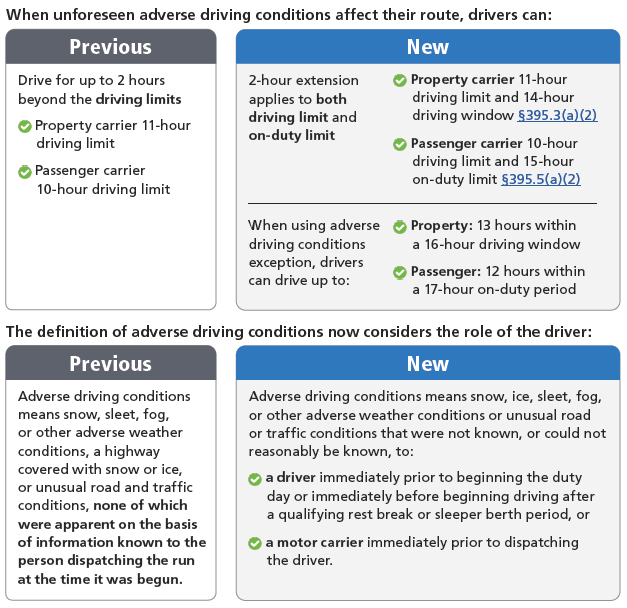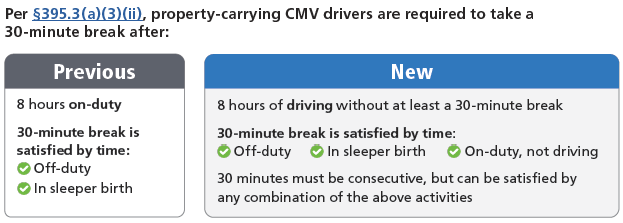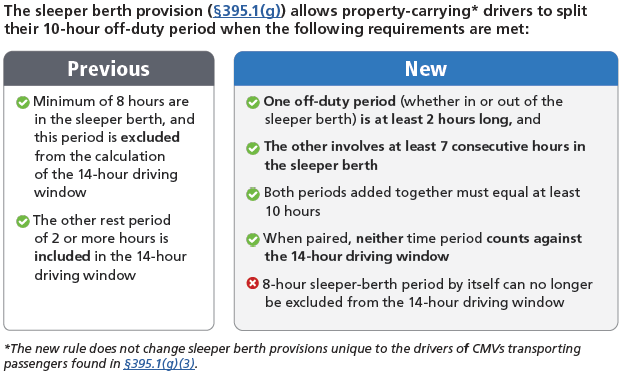
Next month, drivers will begin operating under the new HOS regulations after the rule was debuted on May 14, 2020.
These HOS rule changes were in response to the HOS issues highlighted during the ELD mandate rollout and as an effort to improve safety and flexibility to CMV drivers.
“Right now, there’s no effort to abate or hold off on Sept. 29,” said the agency’s Acting Administrator, Jim Mullen, in FMCSA’s online Truck Safety Summit held Aug. 5.
What are the new hours of service rules?
There are 4 major changes to be included in the hours of service reforms.
Download FMCSA HOS Updates Guide that provides detailed examples of what would qualify for a violation, and what will not qualify.
Short-haul exception:
Changes will lengthen the current 100 air-mile exemption of the drivers’ maximum on‑duty period from 12 to 14 hours, and extending the short-haul radius from 100 air-miles to 150 air-miles, to be consistent with the 150 air-mile exemption of trucks with a GVWR of 26,000 lbs. or less.
Drivers under the short-haul exemption are not required to keep records of duty status.

Adverse driving conditions exception:
Changes will extend both their drive-time limit and their on-duty window by 2 hours if they encounter adverse conditions such as weather or traffic congestion.
According to the FMCSA, the provision will allow drivers to either sit and wait out the conditions or to slowly drive through them with caution.

30-minute break requirement:
Changes will allow drivers to satisfy the required break using on-duty (not driving status) rather than off-duty, and requiring it within their first 8 hours of drive time, rather than their first 8 hours on-duty.
For example, if you are on-duty refueling your truck and it takes 30 minutes, this could qualify as your 30-minute rest break.

Sleeper berth exception:
Changes will allow more flexibility for drivers to split the required 10 hours off-duty into two periods.
7 and 3 split: Must contain at least 7 consecutive hours, either off duty or in the sleeper berth, the shorter period will pause the rolling on-duty clock.
8 and 2 split: Cannot be less than 2 consecutive hours, either off duty or in the sleeper berth, the shorter period will pause the rolling on-duty clock.
Unlike the proposal issued last August, the hours of service changes do not include the option for drivers to pause their 14-hour clock for up to three hours while off-duty to extend the 14-hour clock.
Mullen said the agency deemed the seven-hour, three-hour split “sufficiently flexible” to that end, given with the new change the shorter period in any sleeper split will in fact stop the rolling duty clock, unlike the current split-sleeper rules.

What does this mean for fleets and truck drivers?
These changes provide an important time for fleets to update their driver training. CNS offers a variety of in-person and online training courses for the specific needs or weaknesses of your company or its’ drivers.
Fleets that incorporate training alongside driver qualification, drug testing and fuel tax management can create a complete picture of fleet safety.
Our sister company CNS has a complete safety program—Proactive Safety Management (PSM) Program— that will complement or become your current safety department, without the cost of employing the many staff members it takes to run an effective safety program.
Their PSM programs have a history of increasing safety compliance, decreasing violations





